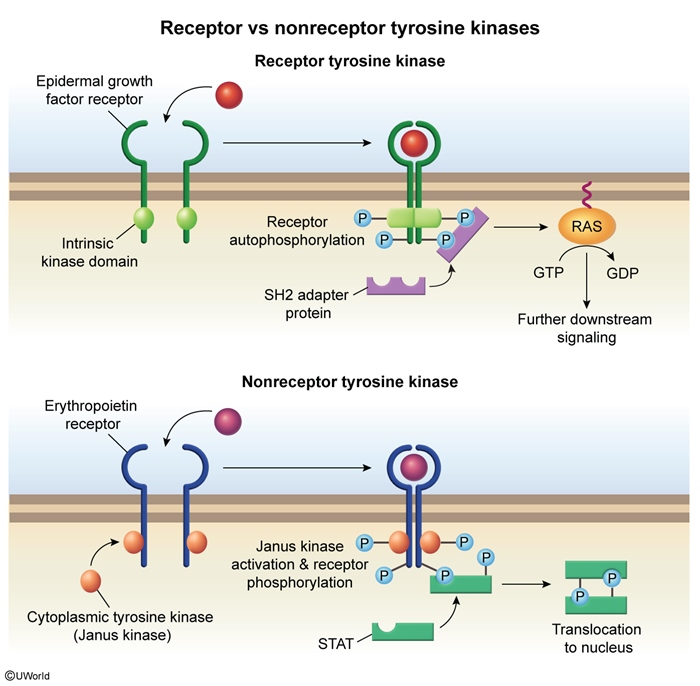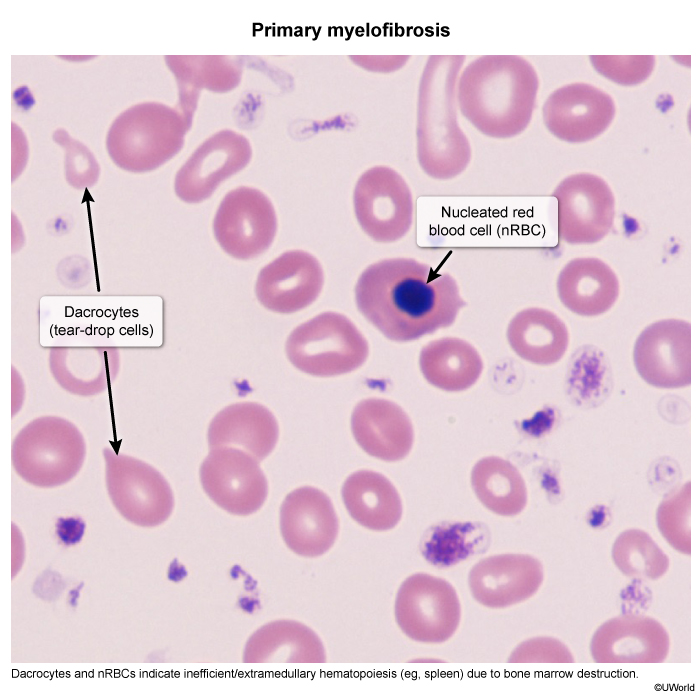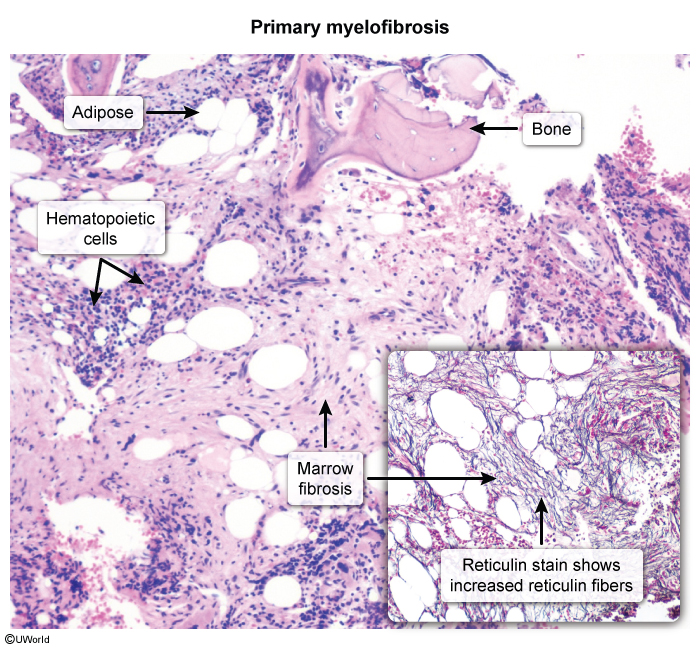Myelofibrosis
Article Sections
Introduction
Myelofibrosis is a chronic myeloproliferative disorder characterized by the progressive replacement of bone marrow with fibrous tissue with subsequent bone marrow failure. Myelofibrosis can arise on its own (ie, primary myelofibrosis) or develop as a complication of other myeloproliferative disorders (eg, myelofibrosis secondary to polycythemia vera). Patients typically present with cytopenias (eg, anemia), hepatosplenomegaly, and constitutional symptoms (eg, severe fatigue).
Pathophysiology and risk factors
Chronic myeloproliferative disorders are a group of neoplasms that occur due to gain-of-function mutations in tyrosine kinases (eg, enzymes involved in hematopoietic growth factor pathways) that lead to overproduction of myeloid cells (eg, platelets, granulocytes) with normal differentiation. The clonal cells in myeloproliferative disorders are prone to acquiring additional mutations that can lead to acute leukemia over time.
Continue Learning with UWorld
Get the full Myelofibrosis article plus rich visuals, real-world cases, and in-depth insights from medical experts, all available through the UWorld Medical Library.
Figures

Images

